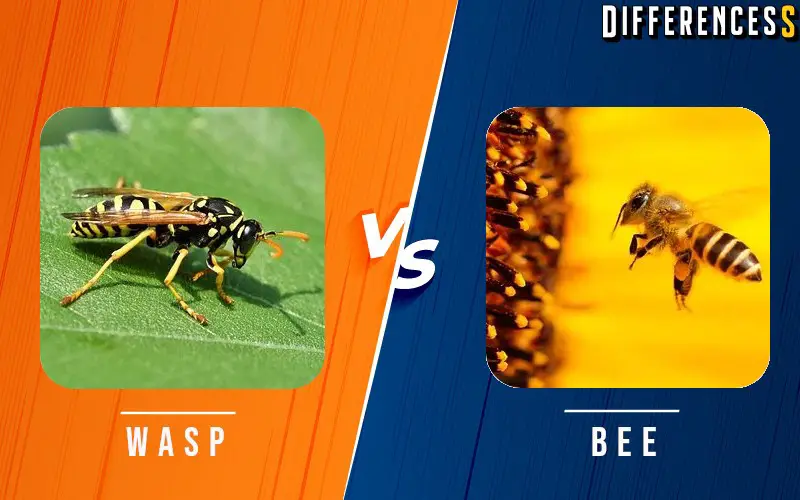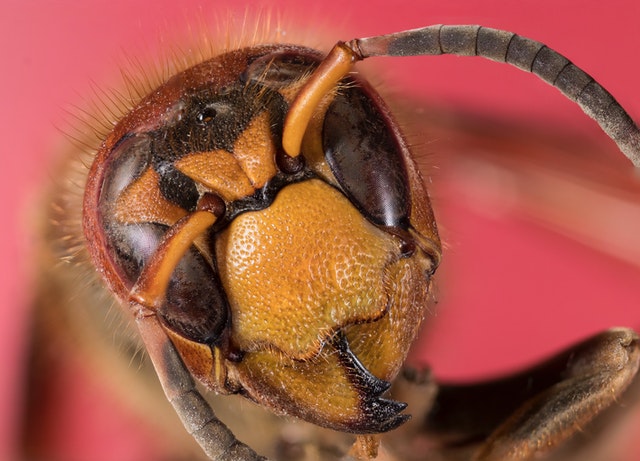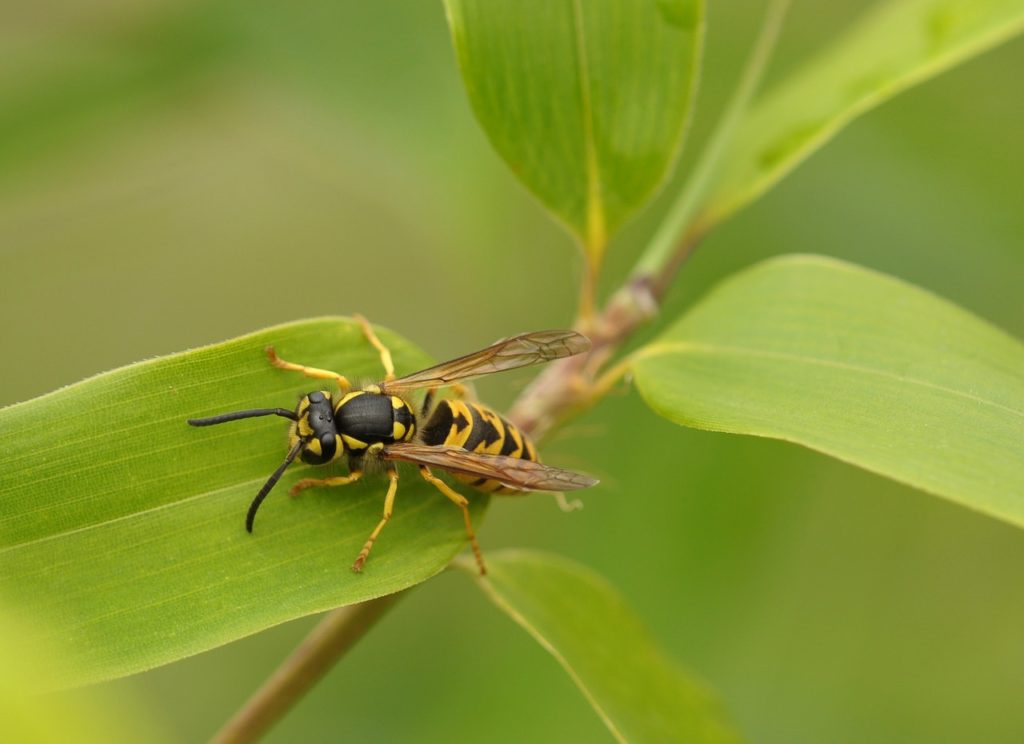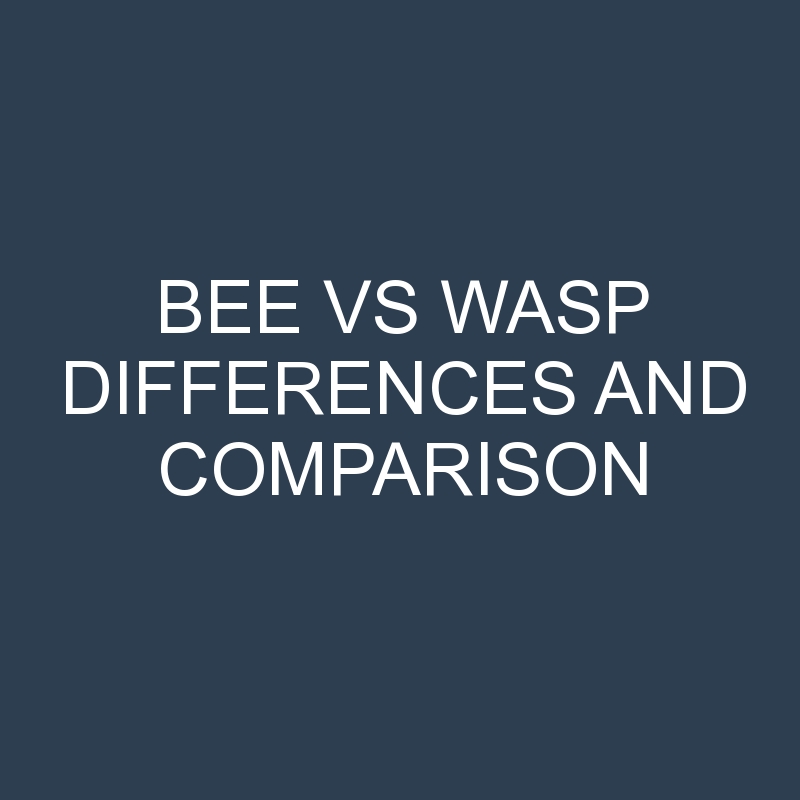
Often bees and wasp are looked upon as the same insects due to similar looks but they have different colour pattern, physiology, behaviour traits etc. Bees and wasp are wholly different animals, let’s know about them in detail so that we can determine our winner if an insect duel happens between them.The intensity of bees stringer vary according to species; sweat bees stings mildly while a honeybees stringer could be very painful as they have a venomous sac attached with the stringer.


Post Contents
Physical Traits:
what do bees look like?
Bees tend to have hairy bodies, wide and flat legs whereas wasps have usually smooth bodies and long-round legs. Bees have round abdomen and thorax while wasp has cylindrical bodies.
How do you know if its a wasp?
Yellow-jackets and European paper wasps can be easily identified by the yellow and black strips on their abdomens.
What is the difference between a wasp and hornet?
The main difference between wasps and hornets is size, with hornets being more larger and robust in size. Additionally, hornets are social insects whereas wasps can be social or solitary, depending on the species.
Feeding Habits:
what do bees feed on?
Due to their hairy bodies, bees are very good pollinators; they collect pollen while they sip the nectar from flowers.
what do wasps eat?
Wasps are predatory insects they eat caterpillars, flies and other small insects. They also attack bees, kill them and sip the nectar from the hive.
Behavior:
how do bees behave?
When any threat befalls on beehive, bees protect it by attacking the intruder with their poisonous stings. The pointed and sharp stringer of a bee can easily pierce skin and bees leave their stringer where they stung, stringer stays there until it was removed manually.
how do wasps behave?
Being a predator wasps are more aggressive than bees. They sting to defend or to protect themselves and their nest from any harm. Like bees wasps do not leave or detach their stringer when they stung, it makes them capable of stinging multiple times whereas bees die after sometime when they stung due to the detachment of the stringer.
Habitat:
Where do we find bees?
Bees are highly social and cooperative insects; they live in colonies. There is a hierarchical order in the bee’s colony with one queen bee per colony as its head, many worker bees, nursing bees and larvae. Bees live in hives, a structure made of beeswax which is a densely packed matrix of hexagonal cells often called ‘honeycomb’. Bees store their honey, pollen, eggs, larvae and pupae in these cells.

Honey bees belonging to subgenus Apis, make their nests in caves, rock cavities and the hollow branch of tress while other bees prefer to make their nest in an open place as exposed aerial combs. The nests are made so perfect that each honeycomb is linked with another and are parallel with a uniform bee space having a single entrance. Western honey bees can be called perfectionist as they choose their nest very precisely like the height of the nest is between 1 metre to 5 metre, facing downward entrance special preference is given to the south-facing entrances and nest should be over 300 metres away from the parent colony, nest cavities have a volume of about 45 litres. They live in a particular nest for many years. Nest architecture of all bees are the same; the upper portion of bees is used to store honey, the middle section has cells where pollen is stored, eggs and worker bees are placed there while the lower portion is the queen’s place.
Where do wasps live?
Wasps make their nests by creating a paper-like substance made of wood pulp as they don’t have wax producing glands. They usually make their nest in the soil by making burrows and use wood pulp mixed with saliva to make cells. Like bees, they use these cells for egg brooding and larvae. Wasp lives in colonies as well as alone; some species live in colonies by constructing nests in-ground or holes of trees or natural cavities whereas solitary wasps predatory and parasitic lives on their own.

Fun Facts for kids: Bees vs Wasps Vs Hornet
Some interesting facts about Bees:
- Bees and Wasps release pheromones when they attacked or in danger to alert their family.
- Queen feeds on special nectar known as royal jelly.
- In an annual peak, a beehive can have around 40,000 bees, especially during the spring season.
- Bees have 5 eyes and 6 legs.
- Bees have been here around 30 million years.
- An average beehive can hold around 50,000 bees.
- Male bees in the hive are called drones.
Some interesting facts about Wasps
- Potter wasps make a vase-like nest made of mud.
- The smell of sugary foods, beverages and beer attract wasps.
- The smallest insect in the world belongs to the wasp family; even smaller than the cell organism like paramecium or amoeba.
Who would win? Bee vs wasp vs hornet
Wasp is more aggressive than a bee; while some wasp species prey and feeds on bees too. If a wasp attacks and stings a bee then it is sure that bee is going to die. But, as bees live in the community if any threat befalls a bee then other bees also begin to sting the predator and a group of bees can kill the wasp. Also, bees which sting the wasp will die as they lose their stringer. In one on one face-off wasp is more dangerous and bigger than a bee; so it will have heavy hand. Hence, we predict wasp as the winner of this duel.
Comparison Chart Bee vs Wasp
| Comparison Heads | Bee | Wasp |
| Kingdom | Animalia | Animalia |
| Class | Insecta | Insecta |
| Order | Hymenoptera | Hymenoptera |
| Suborder | Apocrita | Apocrita |
| Phylum | Arthropoda | Arthropoda |
| Physiology | Hairy legs and body | Smooth |
| Legs | Flat and wide | Round and waxy |
| Abdomen | Round | Cylindrical |
| Behaviour | Social | Social or Solitary, vary as per species |
| Feedings | Nectar and pollen (good pollinators) | Predators |
| Colouration | Light coloured | Prominent colouration pattern |
| Stringer | Stings one time and die due to detachment of stringer | Aggressive and can sting multiple times |
Difference Between Bees, Wasps, and Hornets? Comparison Video
Why do bees chase you?
Some bees are attracted to human sweat. other chase you in case you hurt their nest.
Do bees die after they sting?
Yes Unfortunately they die, When the bee stings, it can’t pull back its sting, hence leaves behind not only the stinger but also part of its digestive tract, muscles and nerves. This massive abdominal detachment is what kills the bee.
What is the largest bee?
Megachile pluto, also known as Wallace’s giant bee is a largest known living resin bee species found in Indonesia.
